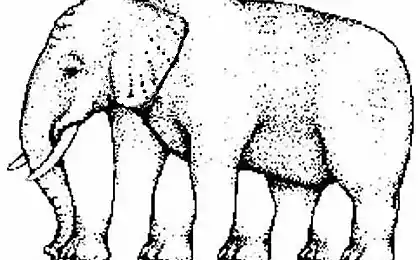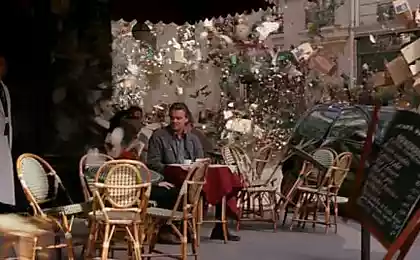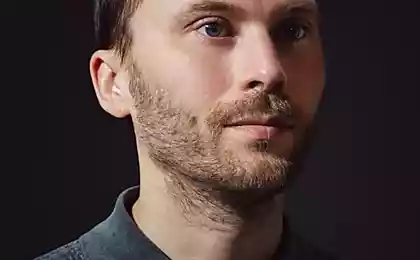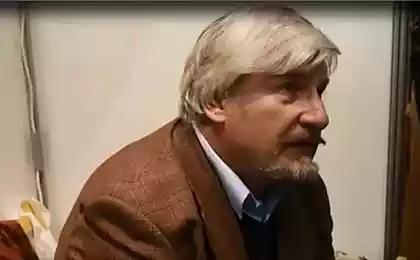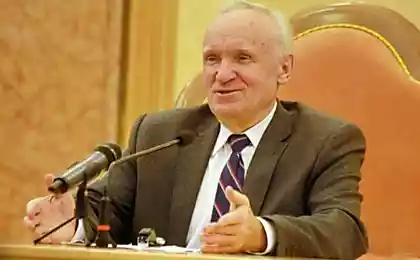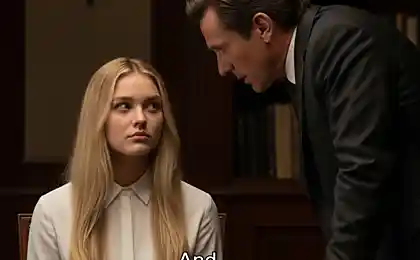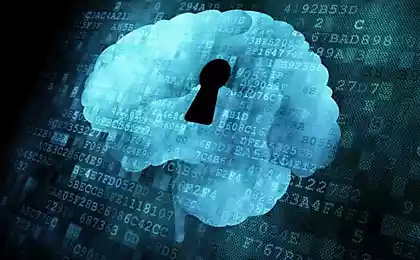1049
Paradoxes can be found anywhere
Paradoxes can be found anywhere, from ecology, finishing geometry. Even for the device you are using to read this article, has its own paradoxes. 10 Here is an explanation of some little-known (but no less interesting) paradoxes. Some concepts are so contrary to common sense that you have to try to make them realize just.
The paradox Peto

Obviously, the more we are whales in size. It also means that their bodies consist of more cells. Each cell of a living organism is exposed to the risk of becoming cancerous. Thus, the whales are more likely to develop cancer than people without it.
In fact it's not. Peto paradox, named in honor of Professor Richard Peto of Oxford University, argues that the relationship between the size of the animal and the risk of cancer exists. And the people and whales have approximately equal chances of getting cancer, while in mice, these chances are much higher, though they are much fewer people, and especially whales.
Some biologists believe that the paradox Peto - a consequence of the body's resistance to infection. Also, this function is related to the prevention of cell mutation.
Tarski paradox Benaka-
Imagine that you are holding the ball. Now imagine that you break it into pieces, and each piece is obtained such form what you want. Then connect all the pieces and make of them not one, but two balls. How do these two balls are different from that of the original?
Theoretically geometry will be argued that the ball can be divided into two other world, in shape and size the same as the original. Moreover, to take two balls of different sizes, each of them can be changed and adjust the size of the other. Ie theoretically speaking, you can change the pea to the size of the sun.
The trick of this paradox is that in the conditions of the job states that you can break the ball on any number of pieces of any shape, but in reality this is not possible: firstly, you are limited to the structure of the material, and secondly, the size of atoms. To condition is satisfied, it is necessary that the ball consisted of an unlimited number of zero-dimensional particles. Wherein the ball is very high density, and wherein each of these particles will have a certain volume. Under these conditions, you can create particles of the balloon of any size. New balls will also consist of an infinite number of particles, while they will be sufficiently high density.
Although it will not work with the ball in the form of a conventional sports balls for mathematical sphere it works. The solution to this paradox, known as theorem Banak-Tarski, is very important for theoretical mathematics.
The problem of the existence of things
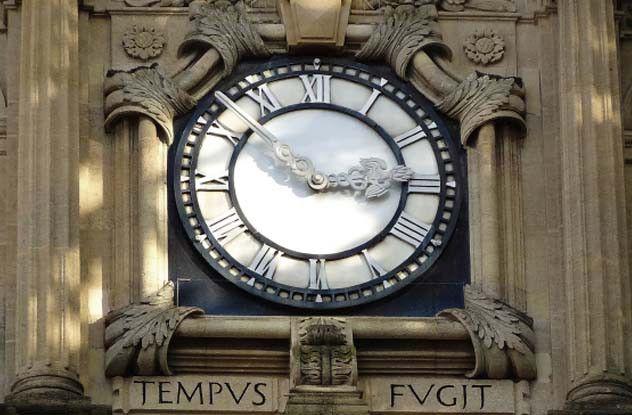
That something is physically exist, it must be present for some time. Also like object can not be the length, width or depth, it can not be absent and the duration of existence. If the object does not exist in time, it does not exist physically.
According to nihilism, there is no past, no future, because they do not take place in the present. Moreover, it is impossible to limit the time that we call the present. All the time, we believe this can be divided into past, present and future. Even if now only lasts a moment, this moment can be divided into three parts: past, present and future. Also, the third part of a second can also be divided into three parts, and so on ad infinitum.
Therefore, this does not exist, because it can not exist in time. Nihilists use it as an argument that there is nothing there.
The paradox Moravec
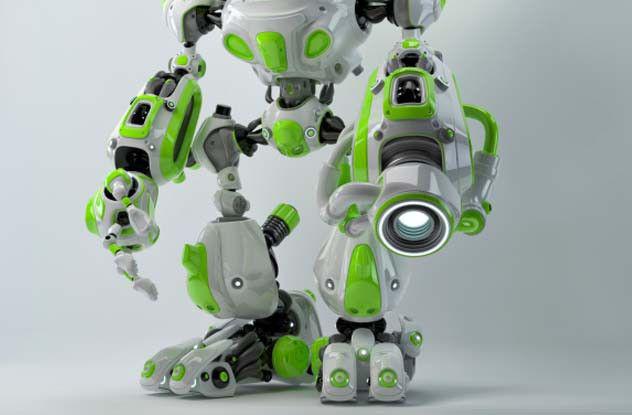
People often experience difficulties when they need to solve complex problems. On the other hand, the basic motor and sensory functions, such as walking, difficulty is encountered. The computer does all the contrary. For a computer it is fairly easy to perform logical tasks, for example, to calculate chess moves, but very easy to walk or get the computer to correctly interpret human speech. The differences between the artificial and the natural mind is the paradox Moravec.
Hans Moravec, researchers and scientists of the Institute of Robotics at Carnegie - Mellon University, explains this difference reversed structure of the human brain. With such a structure it is very easy to understand the mechanism of functions that are unconditional human reflexes. The fact that the ability to abstract thinking characteristic of the person only for less than 100, 000 years, i.e. This ability for a person acquired. However, for us, it was not difficult to create a model that seeks to surpass human abilities. Such abilities as speech or movement, in real life people do not comprehend, so it's pretty easy to get to understand the mechanism of this logic.
Benford's Law
What is the probability that a random number will start from the unit? Or Three? Or, perhaps, with the Group of Seven? If you are not familiar with the theory of probability, you are likely to think that the probability of 1 to 9, or 11%.
And if you pay attention to the existing figures, the number 9 appears much less than 11 percent. Also, far fewer numbers starting with 8, while in the majority, namely 30%, falls to numbers beginning with one. This paradox has appeared in a variety of real-world measurements, ranging from the population and the price of the stock exchange, and ending with the length of the rivers.
The physicist Frank Benford first noticed this phenomenon in 1938. He noted that the number 1 appears at the beginning of in 30.1% of cases, the number 2 in 17.6%, the figure is 3 - 12.5%. Thus, at the end of the list is the number 9 to the result of 4.6%.
To see this, we can look at the number of lottery tickets. In the first ten percent of the tickets as you once thought, and is 11%. Then a dozen tickets from 10 to 19 percent increases immediately. The following ten percentage decreases, due to the fact that each number starts with twos.
Benford's Law is valid not for all cases. For example, when human growth is measured, the number is limited to a maximum value law does not work here. However, it works in a situation where there are many numbers, for example, analysis of any data. With this law, the authorities can identify cheaters. If the information collected does not correspond to Benford's law, we can assume that the person who collected the data, poorly done his job and fabricated figures.
The paradox of the quantity C
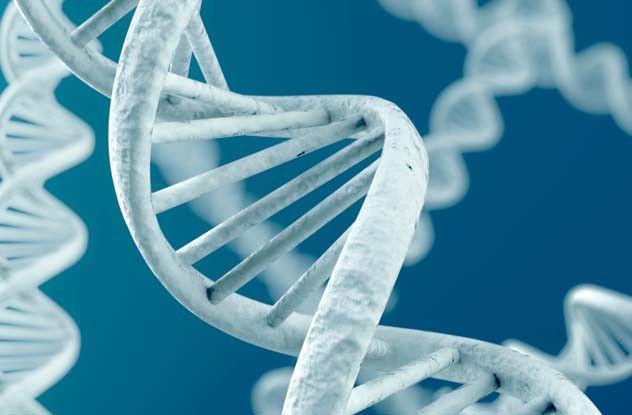
The genes that stores all the information necessary for the creation of a living organism. Because of this, we can assume that complex organisms have the most complex genomes that actually it is not true.
Unicellular amoeba has a genome which is 100 times greater than in humans. In fact, they have the largest genome ever known nature. Furthermore, the species is very similar to each other, can have completely different genomes. This difference is known as the paradox of the value of S.
An interesting fact about this paradox that genomes can be larger than necessary. If all were involved in the genome DNA, a mutation would be inevitable. Genome many complex living organisms, such as humans or primates, including DNA, which does not encrypted. All of this unused DNA led to the paradox of the value of S.
Immortal ant on a rope

Imagine an ant crawling on which meter rope at a rate of 1 centimeter per second. Imagine that the rope is stretched at 1 kilometer per second. Will the ant to get to the end of the rope?
Logically, on reflection, we come to the conclusion that it is impossible, as the ant is moving much slower than the stretched rope. However, he still got to get through.
Before ant starts its movement, it remains in front of the rope 100%. A moment later, the rope becomes much longer, but the ant overcomes all the greater distance and less still to overcome. Meanwhile, the portion of the rope that is behind it is also lengthened. Since All the rope is extended by a constant amount each time the part of the rope that is in front of an ant, less elongated. Thus, it remains less than the distance to overcome.
To this paradox must be one condition: the ant has to be immortal. In order to overcome the distance in the end it will need 2.8 x 10 degree 43429 seconds, which is longer than the life of an ant.
The paradox of the ecological balance
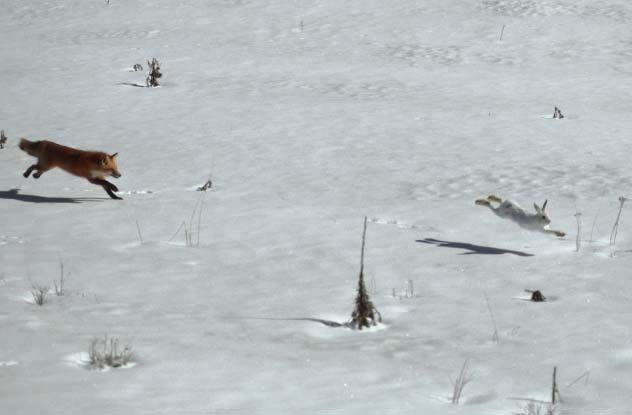
Model behavior predator-prey - this equation to describe a healthy ecological environment. For example, thanks to support populations of foxes and rabbits in the woods. Thus, we can assume that the same thing happens with rabbits and lettuce, which helps them to increase the population.
The paradox of enrichment is that all is not so. Rabbit population increases, but increased the number of rabbits in a closed ecosystem, leading to an increase in the fox population. Rather than maintain a balance again, the opposite happens: the population of predators increases so that they can completely destroy the rabbits in the territory, and then disappear themselves foxes.
In fact, some species can escape this paradox and to establish the normal population. For example, the new conditions could be the cause of new protective mechanisms in the weaker animals.
The paradox of Triton
Gather your friends and watch this video. When finished, let everyone say increased or decreased range sound while all four colors. You will be surprised that the answers will be different.
To understand this paradox, it is necessary to know something about the musical notes. Each note has a pitch of. Note next higher octave sounds twice higher than the previous one. Each octave can be divided into two equal Triton interval.
In the video Triton shares each pair sounds. In each pair, one sound - a mixture of identical sounds different octaves, for example, the combination of notes to, starting with the lowest octave. When the sound moves from one note to the next in Triton, you might think that the second note is higher or previous niche.
Another paradox of Triton - the impression that the sound occasionally becomes lower in height, although in fact it is not.
Mpemba effect

You sit at a table in front of you two glasses of water, they are identical and differ only in that one cold water, the other hot. Place both cups in the freezer. In a glass of water freezes faster? You think, where the cold? You are mistaken, hot water freezes faster.
This strange effect is known as the Mpemba effect, named after the Tanzanian student who watched the example of the freezing liquid milk. Even before Mpemba knew about Aristotle, Francis Bacon and René Descartes, but did not explain its nature.
Several factors contribute Mpemba effect. Firstly, freeze hot water there is a risk that a large part evaporates, thus remains less water which will freeze. Also, warm water contains less gas, which also contributes to a faster freezing.
Another theory is explained in chemistry, namely the structure of molecules. A water molecule consists of two hydrogen atoms bonded to an oxygen atom. When heated water molecules widen bond between the atoms become looser and it promotes the release of energy. This enables them to quickly cool and subsequently freeze faster than the water that was initially cold.
The paradox Peto

Obviously, the more we are whales in size. It also means that their bodies consist of more cells. Each cell of a living organism is exposed to the risk of becoming cancerous. Thus, the whales are more likely to develop cancer than people without it.
In fact it's not. Peto paradox, named in honor of Professor Richard Peto of Oxford University, argues that the relationship between the size of the animal and the risk of cancer exists. And the people and whales have approximately equal chances of getting cancer, while in mice, these chances are much higher, though they are much fewer people, and especially whales.
Some biologists believe that the paradox Peto - a consequence of the body's resistance to infection. Also, this function is related to the prevention of cell mutation.
Tarski paradox Benaka-
Imagine that you are holding the ball. Now imagine that you break it into pieces, and each piece is obtained such form what you want. Then connect all the pieces and make of them not one, but two balls. How do these two balls are different from that of the original?
Theoretically geometry will be argued that the ball can be divided into two other world, in shape and size the same as the original. Moreover, to take two balls of different sizes, each of them can be changed and adjust the size of the other. Ie theoretically speaking, you can change the pea to the size of the sun.
The trick of this paradox is that in the conditions of the job states that you can break the ball on any number of pieces of any shape, but in reality this is not possible: firstly, you are limited to the structure of the material, and secondly, the size of atoms. To condition is satisfied, it is necessary that the ball consisted of an unlimited number of zero-dimensional particles. Wherein the ball is very high density, and wherein each of these particles will have a certain volume. Under these conditions, you can create particles of the balloon of any size. New balls will also consist of an infinite number of particles, while they will be sufficiently high density.
Although it will not work with the ball in the form of a conventional sports balls for mathematical sphere it works. The solution to this paradox, known as theorem Banak-Tarski, is very important for theoretical mathematics.
The problem of the existence of things

That something is physically exist, it must be present for some time. Also like object can not be the length, width or depth, it can not be absent and the duration of existence. If the object does not exist in time, it does not exist physically.
According to nihilism, there is no past, no future, because they do not take place in the present. Moreover, it is impossible to limit the time that we call the present. All the time, we believe this can be divided into past, present and future. Even if now only lasts a moment, this moment can be divided into three parts: past, present and future. Also, the third part of a second can also be divided into three parts, and so on ad infinitum.
Therefore, this does not exist, because it can not exist in time. Nihilists use it as an argument that there is nothing there.
The paradox Moravec

People often experience difficulties when they need to solve complex problems. On the other hand, the basic motor and sensory functions, such as walking, difficulty is encountered. The computer does all the contrary. For a computer it is fairly easy to perform logical tasks, for example, to calculate chess moves, but very easy to walk or get the computer to correctly interpret human speech. The differences between the artificial and the natural mind is the paradox Moravec.
Hans Moravec, researchers and scientists of the Institute of Robotics at Carnegie - Mellon University, explains this difference reversed structure of the human brain. With such a structure it is very easy to understand the mechanism of functions that are unconditional human reflexes. The fact that the ability to abstract thinking characteristic of the person only for less than 100, 000 years, i.e. This ability for a person acquired. However, for us, it was not difficult to create a model that seeks to surpass human abilities. Such abilities as speech or movement, in real life people do not comprehend, so it's pretty easy to get to understand the mechanism of this logic.
Benford's Law
What is the probability that a random number will start from the unit? Or Three? Or, perhaps, with the Group of Seven? If you are not familiar with the theory of probability, you are likely to think that the probability of 1 to 9, or 11%.
And if you pay attention to the existing figures, the number 9 appears much less than 11 percent. Also, far fewer numbers starting with 8, while in the majority, namely 30%, falls to numbers beginning with one. This paradox has appeared in a variety of real-world measurements, ranging from the population and the price of the stock exchange, and ending with the length of the rivers.
The physicist Frank Benford first noticed this phenomenon in 1938. He noted that the number 1 appears at the beginning of in 30.1% of cases, the number 2 in 17.6%, the figure is 3 - 12.5%. Thus, at the end of the list is the number 9 to the result of 4.6%.
To see this, we can look at the number of lottery tickets. In the first ten percent of the tickets as you once thought, and is 11%. Then a dozen tickets from 10 to 19 percent increases immediately. The following ten percentage decreases, due to the fact that each number starts with twos.
Benford's Law is valid not for all cases. For example, when human growth is measured, the number is limited to a maximum value law does not work here. However, it works in a situation where there are many numbers, for example, analysis of any data. With this law, the authorities can identify cheaters. If the information collected does not correspond to Benford's law, we can assume that the person who collected the data, poorly done his job and fabricated figures.
The paradox of the quantity C

The genes that stores all the information necessary for the creation of a living organism. Because of this, we can assume that complex organisms have the most complex genomes that actually it is not true.
Unicellular amoeba has a genome which is 100 times greater than in humans. In fact, they have the largest genome ever known nature. Furthermore, the species is very similar to each other, can have completely different genomes. This difference is known as the paradox of the value of S.
An interesting fact about this paradox that genomes can be larger than necessary. If all were involved in the genome DNA, a mutation would be inevitable. Genome many complex living organisms, such as humans or primates, including DNA, which does not encrypted. All of this unused DNA led to the paradox of the value of S.
Immortal ant on a rope

Imagine an ant crawling on which meter rope at a rate of 1 centimeter per second. Imagine that the rope is stretched at 1 kilometer per second. Will the ant to get to the end of the rope?
Logically, on reflection, we come to the conclusion that it is impossible, as the ant is moving much slower than the stretched rope. However, he still got to get through.
Before ant starts its movement, it remains in front of the rope 100%. A moment later, the rope becomes much longer, but the ant overcomes all the greater distance and less still to overcome. Meanwhile, the portion of the rope that is behind it is also lengthened. Since All the rope is extended by a constant amount each time the part of the rope that is in front of an ant, less elongated. Thus, it remains less than the distance to overcome.
To this paradox must be one condition: the ant has to be immortal. In order to overcome the distance in the end it will need 2.8 x 10 degree 43429 seconds, which is longer than the life of an ant.
The paradox of the ecological balance

Model behavior predator-prey - this equation to describe a healthy ecological environment. For example, thanks to support populations of foxes and rabbits in the woods. Thus, we can assume that the same thing happens with rabbits and lettuce, which helps them to increase the population.
The paradox of enrichment is that all is not so. Rabbit population increases, but increased the number of rabbits in a closed ecosystem, leading to an increase in the fox population. Rather than maintain a balance again, the opposite happens: the population of predators increases so that they can completely destroy the rabbits in the territory, and then disappear themselves foxes.
In fact, some species can escape this paradox and to establish the normal population. For example, the new conditions could be the cause of new protective mechanisms in the weaker animals.
The paradox of Triton
Gather your friends and watch this video. When finished, let everyone say increased or decreased range sound while all four colors. You will be surprised that the answers will be different.
To understand this paradox, it is necessary to know something about the musical notes. Each note has a pitch of. Note next higher octave sounds twice higher than the previous one. Each octave can be divided into two equal Triton interval.
In the video Triton shares each pair sounds. In each pair, one sound - a mixture of identical sounds different octaves, for example, the combination of notes to, starting with the lowest octave. When the sound moves from one note to the next in Triton, you might think that the second note is higher or previous niche.
Another paradox of Triton - the impression that the sound occasionally becomes lower in height, although in fact it is not.
Mpemba effect

You sit at a table in front of you two glasses of water, they are identical and differ only in that one cold water, the other hot. Place both cups in the freezer. In a glass of water freezes faster? You think, where the cold? You are mistaken, hot water freezes faster.
This strange effect is known as the Mpemba effect, named after the Tanzanian student who watched the example of the freezing liquid milk. Even before Mpemba knew about Aristotle, Francis Bacon and René Descartes, but did not explain its nature.
Several factors contribute Mpemba effect. Firstly, freeze hot water there is a risk that a large part evaporates, thus remains less water which will freeze. Also, warm water contains less gas, which also contributes to a faster freezing.
Another theory is explained in chemistry, namely the structure of molecules. A water molecule consists of two hydrogen atoms bonded to an oxygen atom. When heated water molecules widen bond between the atoms become looser and it promotes the release of energy. This enables them to quickly cool and subsequently freeze faster than the water that was initially cold.

